Financial
Peer-to-peer Lending Credit: a breakthrough in cryptocurrency transactions
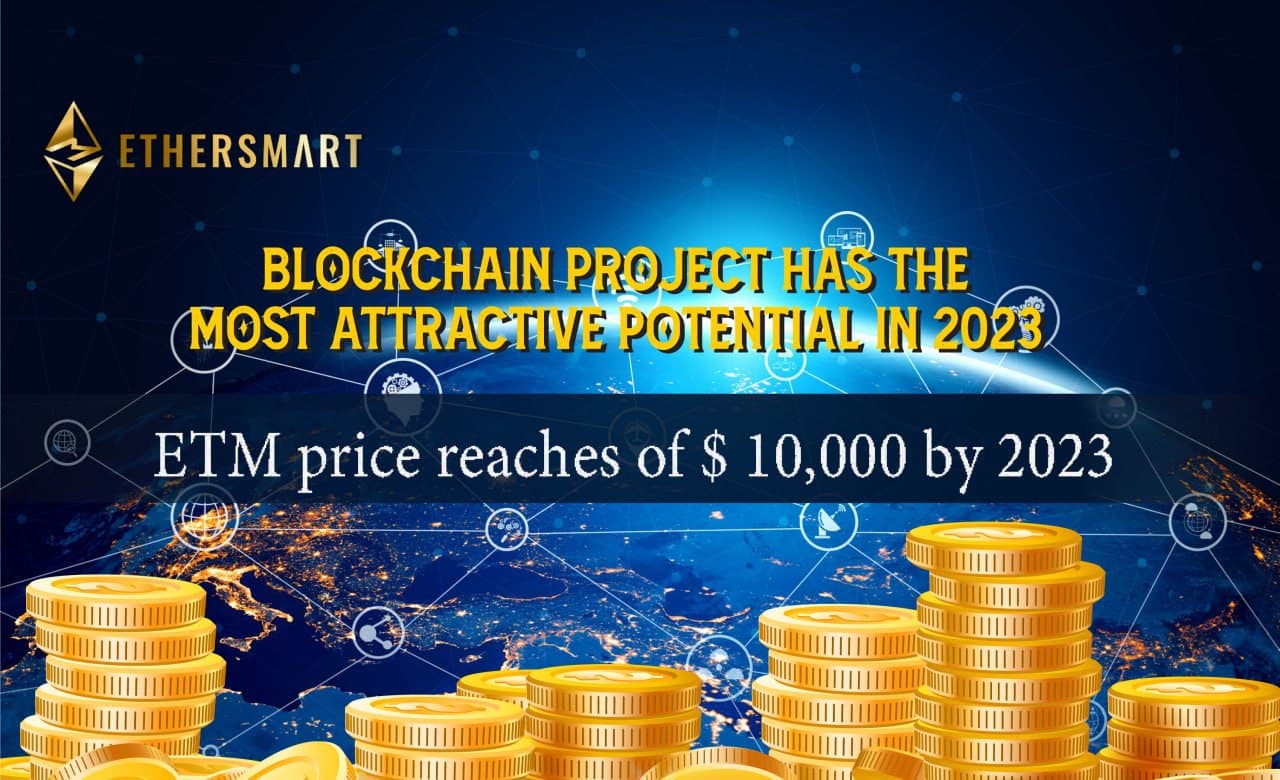
What is P2P2C?
PEER TO PEER TO CRYPTO (P2P2C) is a peer-to-peer lending form of digital money between ETM and BTC, ETH, USDT, XRP, BNB. It uses blockchain technology platform allowing borrowers and lenders to connect directly with each other without the need for financial intermediaries such as banks or credit institutions.
Ethersmart: P2P Lending Credit
Ethersmart Digital Banking is a bank that can perform most banking transactions online through the internet. Digital bank transactions allow you not to go to a bank branch and minimize the paperwork involved. At the same time, the digital banking feature can be performed anytime, anywhere, regardless of time and space.
Ethersmart.org is the most successful project in 2020 as it has built a reputation with the financial market and an intelligent development process towards a picture of sustainable growth to protect investors’ capital, share the income equally for all members. Especially, the ETM token is an intermediary coin in the super profitable ecosystem, where casino billionaires can use ETM to increase their assets hundreds of times.
Peer-to-peer lending credit brings benefit to both borrowers and lenders about interest rates. Lenders enjoy higher interest rates than savings rates. Borrowers enjoy lower interest rates. Besides, they are always guaranteed ETM numbers and collateral are BTC, ETH, USDT, XRP, BNB
ETM teams want ETM to be traded more on satellite products in order to increase your ETM hoard profits even higher.
The potential of blockchain 3. 0 of Ethersmart launched in 2022
Ethersmart Digital Banking is a bank that can perform most banking transactions online through the internet. Ethersmart applies blockchain to bank in order to provide EDBank with a customer identification system based on a distributed ledger. This is really effective because all banks and credit institutions must have a KYC (Know Your Customer) authentication process.
Blockchain Ethersmart allows users to verify identity with just one simple step and this information is stored, authorized to other banks in the system. Financial and banking operations are directly related to deposit and loan security.
When EDBank applies blockchain technology, the whole distribution system of deposit and payment will be decentralized and will not be controlled by any individual or organization. Or as simple as insurance, utility, commercial payment . . .
Instead of the traditional way of working, the payment above will be done automatically. The system will operate on smart contracts, verify automatically and without delay between parties.Moreover, the payment process is instant.
Statistically, more than half of today’s top regulators acknowledge that blockchain plays a key role in the success of banks as well as financial companies. Analysts also emphasize that banks around the world will save $ 80 billion by 2022 by adopting blockchain technology. Some financial analysts believe that, in the near future, blockchain will replace existing bank transfer systems.
Financial
BlockDAG GLOBAL LAUNCH Release Brings $0.0016 Unlock Deal Until August 11 While Bitcoin Solaris Targets $9 Phase 9

Bitcoin Solaris has caught people’s attention with its phase 9 sale at $9. So far, it has pulled in over $5 million and grown its holder base to more than 11,500. What adds an interesting angle is the Nova App, which allows mobile mining, plus the built-in on-chain casino that keeps traders engaged. The confirmed Bitcoin Solaris listing on LBank has made many hopeful, with a $20 launch price already forecast. For those chasing quick wins and stories that drive early interest, Bitcoin Solaris’ phase 9 looks attractive right now.
But compare that to what BlockDAG is doing, and the gap is obvious. BlockDAG presale has already raised over $326 million. Its tools are live, its roadmap is unfolding, and it’s not just hoping for a breakout. It’s focused on real delivery and staying power. From simple DApp kits to actual grants for devs, BlockDAG is rolling out the kind of ecosystem that most coins only talk about.
Bitcoin Solaris Gathers Heat, But Can It Keep It Going?
Bitcoin Solaris’ phase 9 has pulled plenty of eyes to its side. Over 4.2 million coins have sold so far, and its confirmed LBank listing keeps the spotlight on. Traders expect Bitcoin Solaris trading volume to get a strong boost once the $20 launch happens, giving more reason for people to jump in early.
The Nova App’s mobile mining plus the casino experience make it stand out. But there’s still a technical gap. There’s no live testnet yet, no solid dApp launch layer, and very little around an active ecosystem that builders can plug into. So while the Bitcoin Solaris phase 9 push feels promising now, it’s still uncertain if Bitcoin Solaris trading interest can last after its listing. It has to prove it’s more than a short-term play and turn that hype into a solid, lasting project.
BlockDAG Delivers the Infrastructure Bitcoin Solaris Still Lacks
BlockDAG is already showing real progress with 23.4B coins and 18,250 miners already sold. The X1 miner app has over 2 million users tapping away, generating up to 20 BDAG daily. This is real usage, not just a concept.
Its structure relies on DAG technology for fast and efficient transactions. Developers can already use low-code and no-code DApp tools to launch apps quickly. BlockDAG’s security is covered with thorough audits from both CertiK and Halborn
BlockDAG is planning for the long term, too. It’s driving developer engagement with hackathons, grants, and the BlockDAG Academy. Exchange listings are moving forward, and the community keeps growing.
As part of BlockDAG GLOBAL LAUNCH release, BDAG coins are now available at a lower price of $0.0016 until August 11. This brings back one of the lowest prices since batch 1, giving early buyers a shot at up to 3,025% profit when the final $0.05 launch price goes live.
While Bitcoin Solaris works to prove itself, BlockDAG is already running, scaling, and giving back real performance. It’s the difference between big talk and a real network you can use today.
Bitcoin Solaris or BlockDAG: What Really Stands the Test of Time?
If you want to see what separates Bitcoin Solaris from BlockDAG, you have to look deeper than today’s hype. Bitcoin Solaris phase 9 has sparked momentum at $9 with its LBank listing, an increase in trading volume, mobile mining, and its gamified casino. It’s getting strong attention because it fits the fast-move narrative that some traders enjoy.
BlockDAG, on the other hand, is not chasing headlines. It’s building layer by layer. Its $326 million raise fuels a working testnet, advanced DAG architecture, solid audits, and a mobile miner app already serving 2 million users. Developers have access to live tools now, not just promises.
In the end, Bitcoin Solaris might run on short-term energy. BlockDAG is setting itself up for the long game with real systems and an active, growing base. One is about quick moves; the other is about proven scale and staying power.
Final Thoughts
Bitcoin Solaris has created a spark in the market. Its phase 9 sale sits at $9, with a $20 launch on LBank around the corner. Traders expect Bitcoin Solaris trading volume to climb after the listing. For some, this could mean big moves in the short run.
But BlockDAG is in a different league. With $326 million presale, 23.4 billion coins sold, and a testnet already live, it’s doing what many projects only promise. The limited time entry price of $0.0016 until August 11 just sweetens the deal for those looking to get in before the final $0.05 price. It’s not just hype, it’s a working setup, a real community, and clear growth.
For anyone who wants more than just the next jump, BlockDAG stands out as the clear pick for true scale, real delivery, and lasting potential.
Presale: https://purchase.blockdag.network
Website: https://blockdag.network
Telegram: https://t.me/blockDAGnetworkOfficial
Discord: https://discord.gg/Q7BxghMVyu
Financial
100M BDAG Airdrop Live Now! Join Early While $0.0080 Entry Is Open Before the Next Price Explosion

In a crypto space filled with giveaways that often reward bots, BlockDAG is taking a different approach. With a 100 million BDAG airdrop in motion, this isn’t just about free coins; it’s a mission to activate an entire Layer 1 network. The campaign spans four categories and aims to onboard 10 million users who genuinely interact with the ecosystem.
Forget random snapshots or idle claims. This structure is purpose-built to onboard, educate, and retain active contributors from day one. As the mainnet nears, BlockDAG (BDAG) is making participation the only way in. If you want a place in this ecosystem, you’ve got to act now.
Step Into the BlockDAG Airdrop: Quests That Pay to Engage
BlockDAG’s airdrop is driven by action. Users complete tasks in four tracks: Testnet, Presale, Social, and Referral. Each track supports the network’s foundation and rewards users with BDAG.
Testnet Quests: Users perform tasks within BlockDAG’s testnet, such as bug reporting, smart contract deployment, and test wallet usage. These actions help strengthen the network before the full launch.
Presale Quests: This involves buying BDAG, using the X1 Miner App, and ordering physical miners. It helps fuel platform development while giving users real engagement opportunities.
Social Quests: Community growth is key. Users interact via Twitter (X) and Telegram by following, reposting, and commenting to grow the platform’s reach.
Referral Quests: Through invites, users grow the ecosystem and earn BDAG. This peer-driven method ensures sustained, organic network expansion.
Tap to Earn: How the X1 App Brings Millions Into Mining
BlockDAG’s X1 mobile mining app, now used by over 2 million people in 100+ countries, makes crypto simple. Just one tap a day lets users mine BDAG via a Proof-of-Engagement model. It’s battery-light, easy to use, and rewards commitment.
This app is more than a mining tool; it’s a growth engine. It welcomes users with no prior experience and turns them into daily contributors. Paired with the airdrop, the app ensures a broad and engaged user base.
At present, BDAG is in Batch 29, priced at $0.0080, with a final launch price of $0.05. Over $325 million has been raised, 23.3 billion BDAG sold, and over 18,201 miners purchased. This creates urgency for those who want in before the price rises again.
$325M Presale & Counting: Why the Ecosystem Is Built Before Launch
BlockDAG isn’t waiting until launch to build traction. With the airdrop active, the team is already collecting feedback, running user tasks, and testing systems in real time.
This strategy unites every arm of development: coding through testnet, funding through presale, visibility through social, and growth through referrals. Each BDAG coin given away has a purpose. Each task completed adds strength.
Most launches miss key elements like users, funds, or feedback. BlockDAG solves all of that before launch. It’s an early, user-driven network rollout fueled by real action, not speculation.
The full tech stack, including EVM compatibility and DAG-based structure, supports the project’s push for mass adoption. And it starts now with a tap, a quest, and a growing global base.
The Bottom Line
BlockDAG isn’t just offering airdropped coins. It’s handing users a role in something much larger. From technical contributors to casual users with a phone, everyone has a place.
Take part now. Complete the quests, refer to your network, and claim your stake. With $325 million already raised in presale, the early window of $0.0080 is closing fast.
Ten million users are about to be part of this network. Are you going to be one of them?
Presale: https://purchase.blockdag.network
Website: https://blockdag.network
Telegram: https://t.me/blockDAGnetworkOfficial
Discord: https://discord.gg/Q7BxghMVyu
Financial
BlockDAG’s Massive 100M BDAG Airdrop is Officially Live As AVAX Strengthens At $18 And PI Holds

Why is there so much buzz right now around Avalanche (AVAX) and Pi network (PI) prices? Many are watching AVAX test key resistance near $18.50, while Pi stays firm at $0.54 ahead of a big event. But there’s another project making noise, not for price moves but for what it’s doing with its users. BlockDAG is not just promising future gains; it’s rewarding users now.
The live airdrop campaign by BlockDAG (BDAG) offers rewards for actions such as joining the testnet, posting on social media, making referrals, and participating in app activity. Whether testing the miner or uploading a TikTok, users earn real rewards. With the top 100 leaderboard resetting every 90 days, users get fast payouts. For anyone looking for standout crypto in 2025, this is a project offering rewards right now.
AVAX Holds Firm at $18.47 Support
Avalanche (AVAX) continues to trade in a mixed pattern while maintaining activity in the market. After recently climbing to $18.47, AVAX is now holding just above $18 and testing a strong resistance zone. Technical indicators such as the MACD and RSI suggest potential upward movement, though risks of a drop to $15 remain if momentum weakens.
On-chain activity is increasing, with larger holders showing confidence, while retail traders remain cautious, selling off $821K worth of coins in the last 24 hours. Analysts are closely observing whether AVAX can break past $18.50 to move toward $19 to $20, or if it will fall below $15 for a sharper correction.
PI Holds Strong at $0.54 Ahead of Pi2Day Buzz
Pi network (PI) is holding firm at $0.54, with recent price action ranging between $0.506 and $0.551. As the Pi2Day event nears on June 28, market watchers are anticipating news that could influence movement. Indicators like the MACD and RSI reveal growing momentum, while a wedge chart pattern hints at a potential breakout. A rise above $0.55 could send the price toward $0.60 or more.
A dip below $0.52 may increase short-term selling pressure. The network continues to expand, now boasting over 60 million users and over 100 days on its open mainnet. On-chain activity is strong, with 6.5 million PI coins moved to exchanges.
BlockDAG Airdrop Pays Top 100 Every 90 Days in Rewards
BlockDAG is taking an active approach by offering rewards through its live airdrop campaign. The project encourages participation through four simple ways to earn points. These include joining the testnet, sharing on social media platforms, inviting new users, and purchasing in the presale. Whether it involves running a node, posting a YouTube video, or sharing updates on X, every action counts toward the leaderboard.
The top 100 participants receive rewards every 90 days, providing fast and clear benefits to those engaging with the platform. This reward-driven model has helped BlockDAG become a standout project among the top crypto contenders for 2025.
Currently, more than 2 million users are active on the X1 Miner app. The project is also preparing to ship mining hardware units, with X30 and X100 expected by July 7 and X10 units by August 15.
BlockDAG is in Batch 29, with the presale price at $0.0080. More than 23.3 billion coins have already been sold, raising $325 million toward a goal of $600 million across 45 batches.
The Batch 29 original price is set at $0.0276, while early buyers from Batch 1 have seen gains of 2,660%. Plans for listings on exchanges like MEXC, BitMart, and LBank are underway. BlockDAG offers practical tools and real earnings, positioning itself as a key crypto to watch in 2025.
Summing Up!
Avalanche (AVAX) remains steady near $18, with market watchers tracking a possible breakout above $18.50 or a decline toward $15. The Pi network (PI) holds near $0.54, with anticipation building ahead of the Pi2Day event. Both coins show active market participation, though short-term price movements rely heavily on upcoming updates.
In comparison, BlockDAG continues rewarding its community through an active airdrop program. By testing the network, engaging on social platforms, and referring others, participants gain rewards, with payouts every 90 days. For those seeking standout crypto projects for 2025, BlockDAG presents an appealing opportunity to remain engaged and earn consistently while contributing to its ecosystem.
Presale: https://purchase.blockdag.network
Website: https://blockdag.network
Telegram: https://t.me/blockDAGnetworkOfficial
Discord: https://discord.gg/Q7BxghMVyu
-

 Crypto3 years ago
Crypto3 years agoCardalonia Aiming To Become The Biggest Metaverse Project On Cardano
-
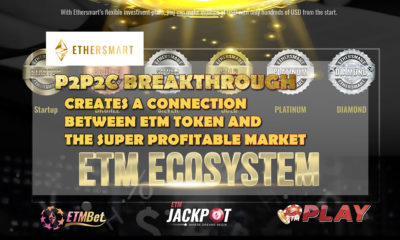
 Press Release5 years ago
Press Release5 years agoP2P2C BREAKTHROUGH CREATES A CONNECTION BETWEEN ETM TOKEN AND THE SUPER PROFITABLE MARKET
-
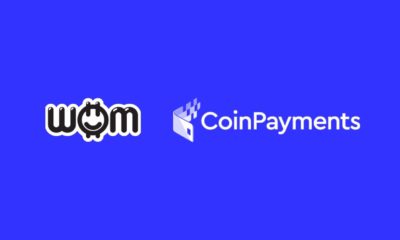
 Blockchain5 years ago
Blockchain5 years agoWOM Protocol partners with CoinPayments, the world’s largest cryptocurrency payments processor
-

 Press Release5 years ago
Press Release5 years agoETHERSMART DEVELOPER’S VISION MADE FINTECH COMPANY BECOME DUBAI’S TOP DIGITAL BANK
-
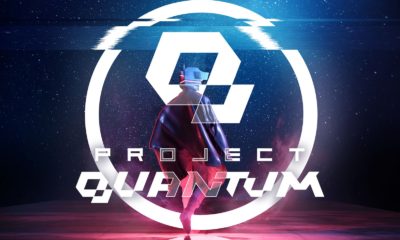
 Press Release4 years ago
Press Release4 years agoProject Quantum – Decentralised AAA Gaming
-

 Blockchain5 years ago
Blockchain5 years agoWOM Protocol Recommended by Premier Crypto Analyst as only full featured project for August
-
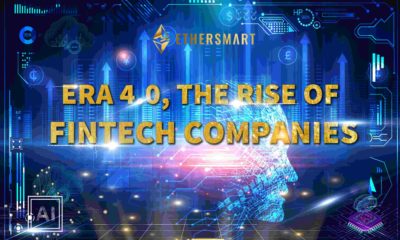
 Press Release5 years ago
Press Release5 years agoETHERSMART DEVELOPER’S VISION MADE FINTECH COMPANY BECOME DUBAI’S TOP DIGITAL BANK
-
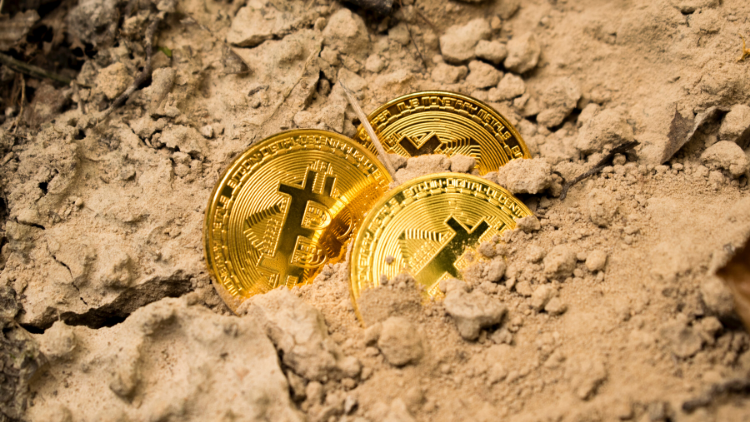
 Blockchain5 years ago
Blockchain5 years ago1.5 Times More Bitcoin is purchased by Grayscale Than Daily Mined Coins






